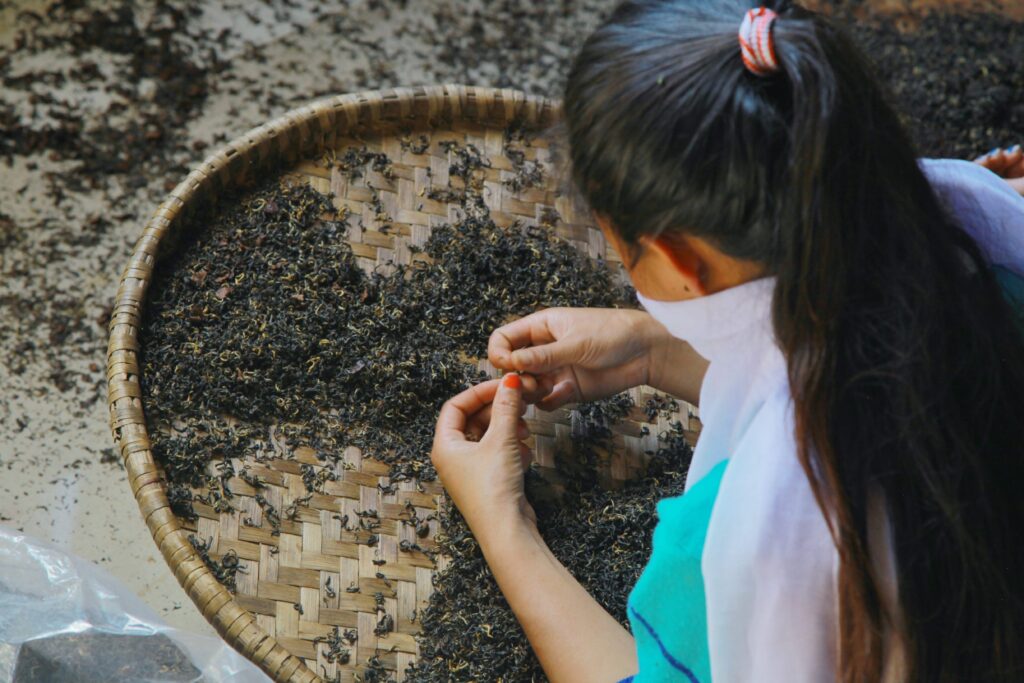Nepal Tea
Nepali tea, grown in the pristine and high-altitude regions of the Himalayas, has garnered international acclaim for its unique flavors, intricate processing, and exceptional quality. Over the past decades, the teas from Nepal have gained recognition as a rival to traditional Darjeeling teas, often celebrated as the “Champagne of teas” due to their similar terroir, yet with distinct characteristics that reflect Nepal’s diverse climate and meticulous production methods.

Nepal’s tea plantations are primarily located in the eastern regions, such as Ilam and Dhankuta, where tea bushes thrive at altitudes ranging from 4,000 to 7,000 feet. This high-altitude environment is vital to the character of Nepali tea. The steep Himalayan slopes provide a natural drainage system, reducing excess moisture around the roots and allowing the plants to absorb just the right amount of water. The cooler temperatures, combined with abundant sunlight, help to develop the slow-growing tea leaves, which in turn enhances the concentration of essential oils and complex flavor compounds.
The soil composition, rich in minerals due to its proximity to the Himalayan mountains, further enhances the unique terroir. The combination of altitude, climate, and soil nurtures Nepali tea plants in a way that is almost unparalleled, creating a balanced flavor profile that is light, floral, and delicate yet robust and complex.



Nepali tea embodies a remarkable fusion of tradition, quality, and environmental respect. From the mineral-rich soils of the Himalayas to the careful and often artisanal processing methods, each cup of Nepali tea tells a story of resilience, flavor, and dedication. As these teas gain a larger global following, they not only offer a unique tasting experience but also play a crucial role in supporting Nepal’s rural economies and preserving its cultural heritage. Whether enjoyed for its brisk black tea, delicate white, or complex oolong, Nepali tea provides an exquisite taste of the Himalayas, offering a fresh and flavorful perspective in the world of fine teas.
Pages


